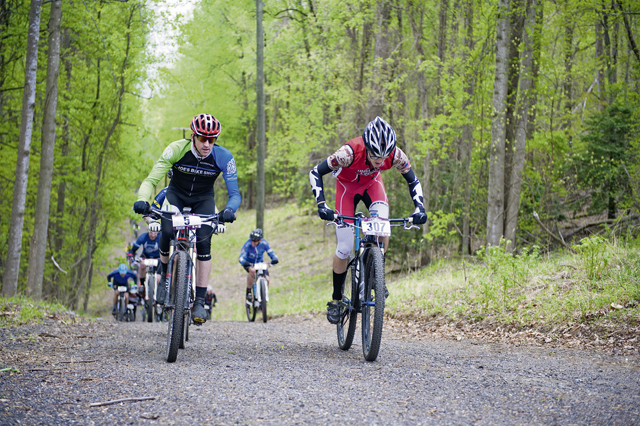
With summer officially arriving in the Northern Hemisphere, it’s time to get outside.
There are many safe ways to stay active, maintain readiness, and enjoy the outdoors.
Plus, “there’s so much research on the effect that just being out in the sun and being out of doors and engaging in any kind of physical activity has on your mental health in general,” said Sara Morris, an ultra-trail runner and certified track coach in Fort Knox, Kentucky.
As an Army Reserve soldier, Morris understands the importance of engaging in activities that help maintain readiness while also reducing stress and having fun.
“As long as you’re being safe, you can’t beat the benefits,” she said.
For example, she suggests “doing things that may be different than what you do in the winter, like going biking, paddleboarding, swimming, and hiking are good ways to get outside in nature in the summer.”
Those types of activities are also “a way to get those feel-good endorphins,” she added.
“And those activities can oftentimes be done for free, which is also great.”
Region specific activities
Biking is another great sport, said Chuck Alfultis, the outdoor recreation manager for the Air Force Academy’s Morale, Welfare, and Recreation program, in Colorado Springs, Colorado.
“Specifically, here in Colorado, it’s mountain biking. But any type of cycling and biking is excellent cardio,” he said. “It’s a way to get your fitness, get you out in the sun in the nice weather.”
And depending on where you may be stationed, there are other activities people can do, like rock climbing, whitewater rafting, and other water sports, like canoeing and kayaking.
“Outdoor recreation has gained popularity in the last couple of years because of COVID, he said. “During COVID, it was a way to get out of your house. You didn’t have to be around people, so outdoor activities and getting back out to nature really exploded.”
Alfultis highlighted that every military installation has MWR programs and services for service members, their families, military retirees, veterans with service-connected disabilities, and current and retired Department of Defense civilian employees and other eligible participants.
The MWR programs can include organized group activities as well as guidance for activities and events you can take advantage of in your location.
Safety outdoors
Morris highlighted that in the outdoors, “the big thing is sun protection and hydration.”
Being aware of the heat and the way that your body sweats throughout the day are important factors to keep in mind, she said.
“Making sure you’re wearing UPF clothing [which indicates how much UV radiation a fabric allows to reach your skin], making sure you’re putting on sunscreen at the proper intervals, and making sure that you have plenty of water,” she said.
For example, when she goes hiking with her family, she makes sure to carry an extra bottle of water to ensure there’s enough for everyone.
“We’ll each have our own water bottle, plus one extra just in case the activity takes a little bit longer than we intended,” she said. “We also always have extra sunscreen to put on our faces and make sure we have hats on our heads.”
Another factor to remember is ticks. In Kentucky, like many other places, “it’s been a really bad tick season” this year, she said. “So, you’re going to want to have some bug spray to protect yourself and you’re also going to want to check yourself when you get home to make sure that you don’t have any ticks on your body, on your children’s body, on your animal’s body to protect yourselves from that as well.”
Morris noted the military community’s access to the MilTICK program, which allows service members and DOD beneficiaries, including contractors and DOD civilians, to submit their ticks for identification and testing without needing to visit a clinic or order a test kit.
“So, if you do find a tick, and it did bite you, you can submit that tick to be tested to see if it’s going to affect you,” said Morris. “You can also generally take it to the clinic on post or the vet on post and they can test for your animals as well.”
Some precautions
Other precautions include water safety, being aware of the weather and the wild animals common to your location.
In terms of water safety, Morris warns “it doesn’t take very much water to drown.” She recommends being observant and cautious when you’re in the water, especially if you don’t know how to swim.
In that case, Alfultis added that always wearing a personal flotation device is key. “Just make sure you wear those at all times,” he said.
When you’re traveling and going hiking in a new location, “make sure you know what wild animals are present, and if you need to have bear spray or remain on heightened alert to your surroundings,” said Morris.
Alfultis said it’s also important to wear proper attire. “Make sure you wear proper closed-toe shoes rather than flip-flops if you’re going to participate in cycling or hiking,” he said.
“And if you’re doing something alone, make sure somebody knows where you’re going, what you’re doing, and how long you’re going to be gone so they know at what time to expect you back or where to look for you,” he said.
“If you park in a public area, take a moment to write down at what time you started, your route, and an emergency contact number. Put that in the dashboard of your car, so if someone comes across your vehicle, they know who you are and the route that you were going.”


